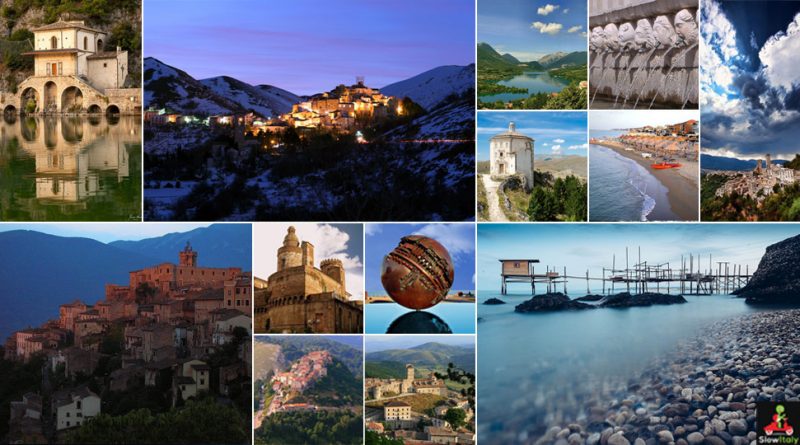1. Introduction
Abruzzo is situated at the centre of the Italian peninsula facing the Adriatic, which it follows along 150 km of beaches and rocks. On the west it is bordered by the Apennines, to the north by the region of Marche, Lazio to the west and south-west, and Molise to the south-east.
The 500 km2 (190 sq mi) of the Abruzzo National Park host rare examples of Mediterranean flora and fauna (chamois, wolves, bears, golden eagles).
2. Planning your trip to Abruzzo: when to go and what to visit
Abruzzo is one of the lesser known and ‘authentic’ regions of Italy, where mountains and beaches blend perfectly with great food and ‘strong’ wines.
Abruzzo can be visited in any season: if you go in Winter, then the ski resorts Campo Imperatore (famous for having been a prison to Benito Mussolini the second world war), Roccaraso and Campo Felice may be a perfect choice.
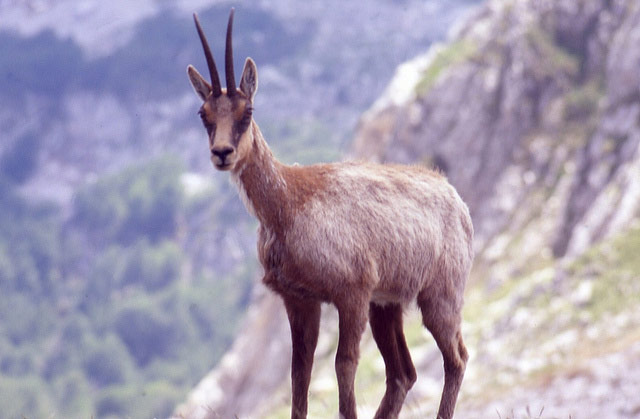
Should you decide to go in Spring, we recommend you visit the famous Abruzzo National Park. Located very near to the mountain group called La Maiella, you will enjoy some beautiful promenades and, if you are lucky, maybe spot a few of the surviving local chamois, bears and wolves.
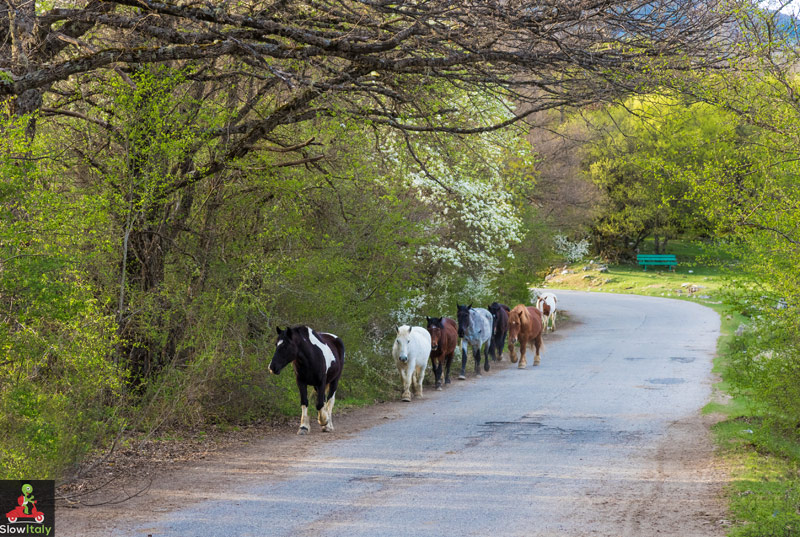
Alternatively, you may decide to visit this fantastic region in Summer. In that case you may want to enjoy the adriatic sea-side and sandy beaches located in Silvi Marina and Francavilla a mare. These beaches are very much comparable to the more famous Rimini and Riccione (a few hundred kilometers North in the Emilia-Romagna region) but certainly much less crowded.
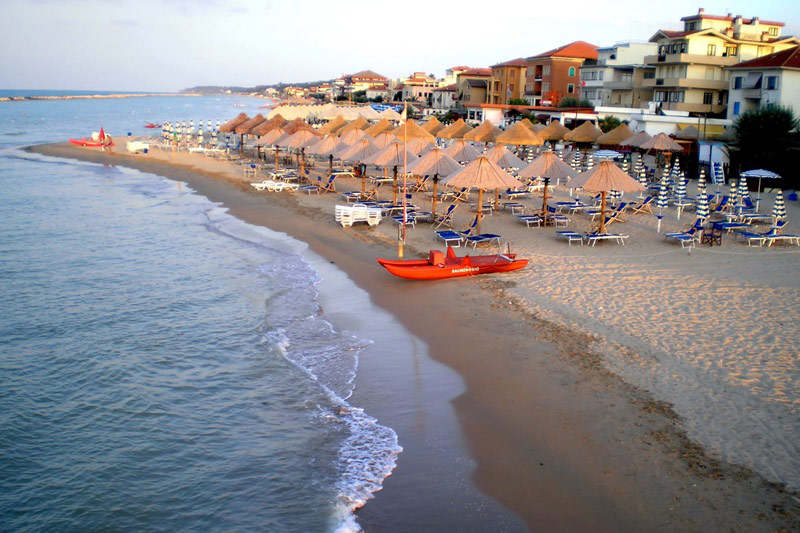
Last but not least, you may decide to visit Abruzzo in Autumn, when one can still get a bit of sun-tan, avoiding, however, the strong heat of the Summer and all the touristic crowds. Perfect for appreciating a good white or red accompanied by the local food.
As a week-end getaway Pescara is a lovely destination. The town, is situated at the end of the river Pescara (Aterno) that splits it in two sides. It is Abruzzo’s most populous city with its 120000 inhabitants.
Pescara is one of the biggest touristic ports of the Adriatic sea and also a fisherman port where – in late the afternoon – you can appreciate boats coming from the sea with wonderful fresh fish and sea food.
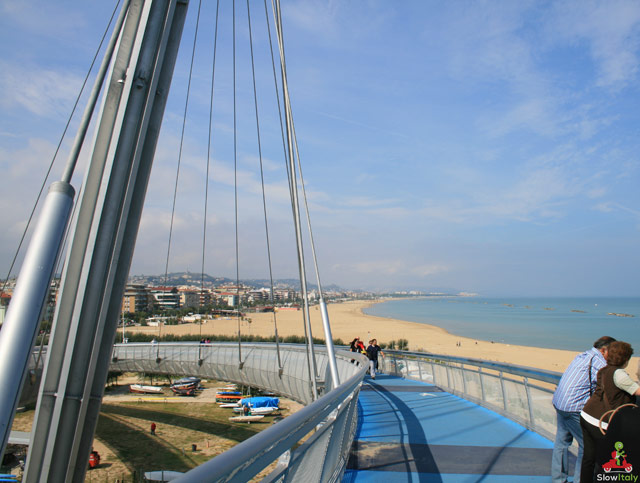
Under the autumnal sun, you may enjoy a walk in the small city center of Pescare or along the sea-side. A walk across the suspended bridge that links the Northern part of the city with the Southern one is a “must”. After dinner, we suggest you have a walk in the old city where the pubs and bars are a great way to close the night with with music and dance.
Top Cities to visit in Abruzzo
(in alphabetical order)
L’Aquila, located on the slopes of the Gran Sasso
Pescara, an important seaside town
Chieti
Teramo
Top Sights and Destinations in Abruzzo
(in alphabetical order)
Abruzzo National Park
Castello di Celano
Tortoreto, Giulianova, Silvi Marina, Roseto, Ortona, Vasto and San Salvo, for their beaches
Santo Stefano di Sessanio
Scanno, a picturesque little town located in the Sangro Valley
Sulmona
And the many ancient hamlets of the region
Climate
The climate is varied – warm and dry on the coast, an alpine climate in the mountainous interior.
3. What to eat and drink in Abruzzo
The region are blessed with a lot of good restaurants serving excellent food – in line with the region that combines mountains and sea-side – whether you choose fish or meat.
In Pescare, we strongly recommend either a good typical fried fish plate (fritto misto di pesce) to be enjoyed in any of the many restaurants located just on the beach or raw fish in a more refined restaurant, where they serve extremely fresh fish of the highest quality.
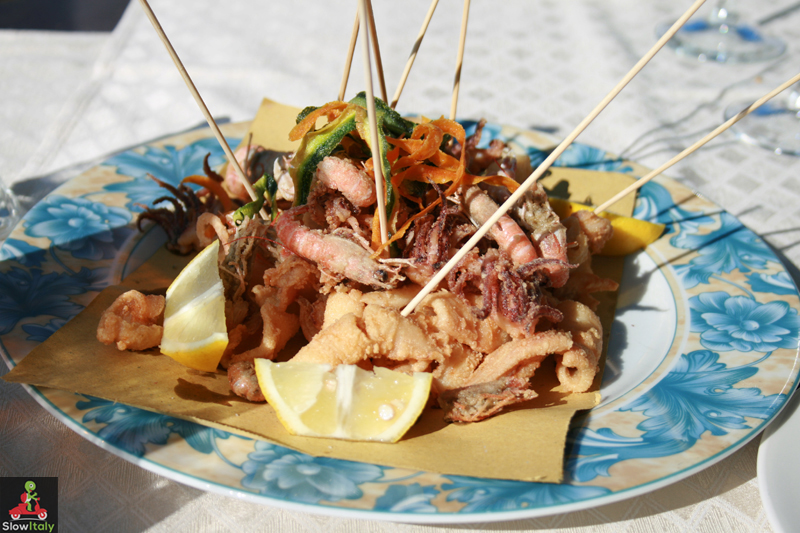
You may want to accompany these meals with a local wine, Pecorino-Terre di Chieti, a fruity white that some call “the bourgogne of Italy”. The value for money of this wine is simply amazing.
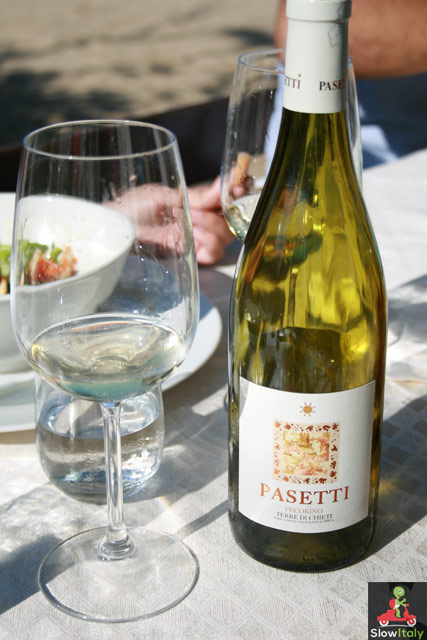
Another characteristic of Abruzzo is the home-made pasta. Here are great Italian pasta maker such as De Cecco (who lives himself in Pescara), Cocco (who has been the supplier for the “pope” and the vatical for many years) and several others.
However, in any restaurant the choice of home-made pasta, coming from the Abruzzi tradition, is simply outstanding. We have tried the “Rintrocino”, a sort of “spaghetti alla chitarra” much bigger, with aubergines, tomato, meat and goat cheese on top that were delicious.
Meat dishes are also very good and, the, you have to accompany with the famous, local, red called Montepulciano d’Abruzzo (see picture). This wine is deep purple with a strong ruby colour, quite fruity but not strong in tannin.
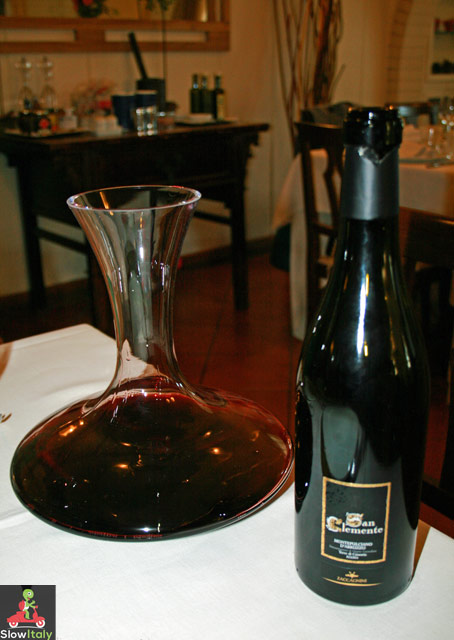
It is produced from the local grape, called Montepulciano, blended with 5-10% of San Giovese. It is a strong wine, often around 14% alcohol that pairs perfectly with the pasta dishes (primi) and meat dishes of the regional Abruzzo cuisine.
4. Famous people from Abruzzo
Benedetto Croce – Pescasseroli (AQ)
Rocco Siffredi – Ortona (CH)
Luca Dirisio – Vasto (CH)
Jarno Trulli – Pescara (PE)
Gabriele D’Annunzio – Pescara (PE)
Bruno Vespa – L’Aquila (AQ)
Pope Bonifacio IV – S. Benedetto dei Marsi (AQ)
Italo-americans born from Abruzzese parents
Perry Como – Palena (CH)
Rocky Marciano – Ripa Teatina (CH)
Dino Crocetti (alias Dean Martin) – Montesilvano (PE)
Henry Mancini – Scanno (AQ)
Madonna – Luise Veronica Ciccone – Pacentro (AQ)
Tommy Lasorda – Tollo (CH)
John Fante – Torricella Peligna (CH)
Argentinian born from Abruzzese parents
Juan Manuel Fangio
Photo credits: Abruzzo collage, Trabucco by Martin Martinsson, Capestrano at sunset by Fabio Spinozzi; Santo Stefano di Sessanio by night © Mattero Gabrieli; Chiesa di Santa Maria della Pietà by Cristiano Sabbatini; Opi, Castel del Monte, Francavilla al Mare and Lago di Barrea by Luigi Alesi; Fontana delle 99 Cannelle by Luigi Guarino; Appenine Chamois by Patrizia Peinetti; Abruzzo National Park (horses) © Valerio Mei;

